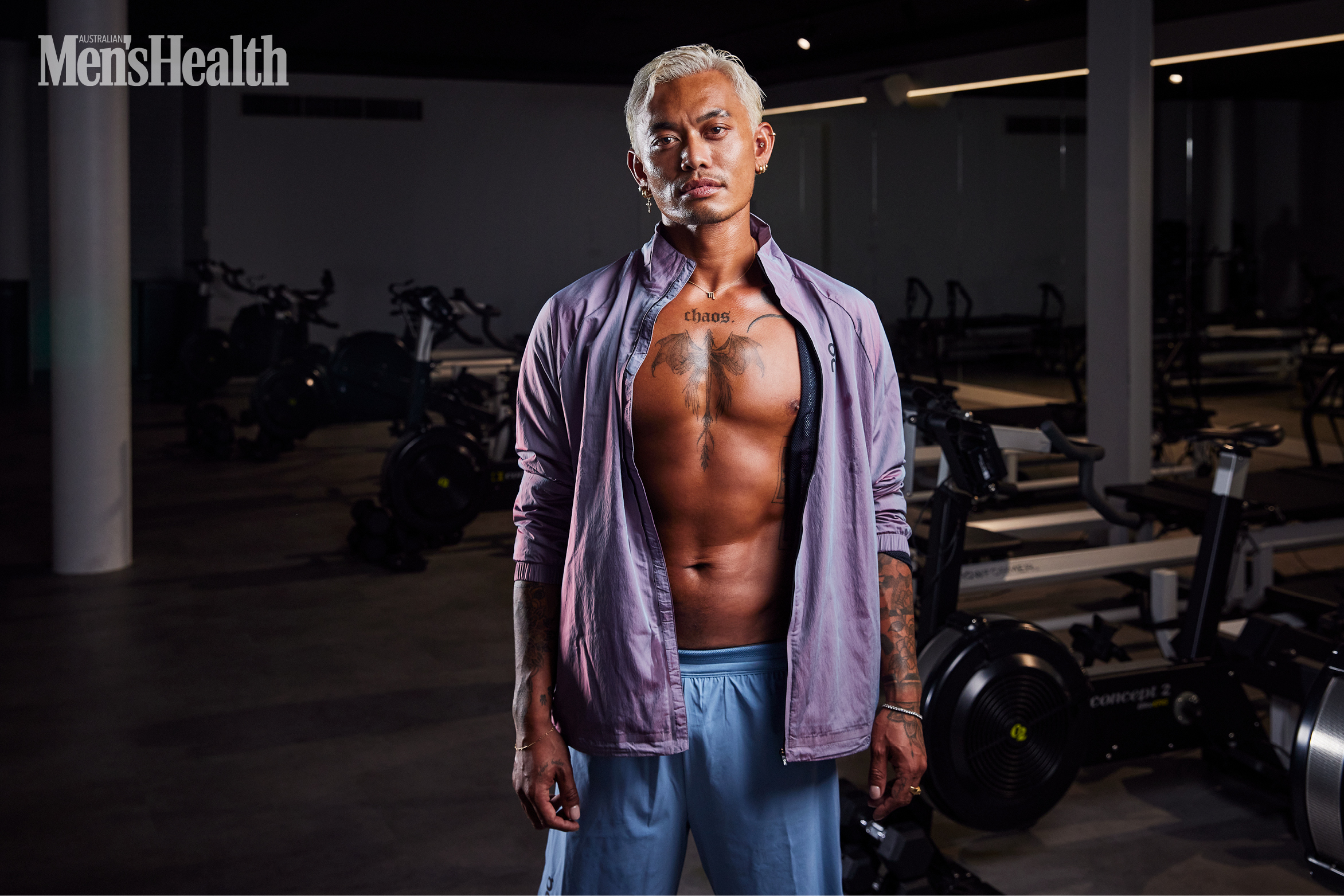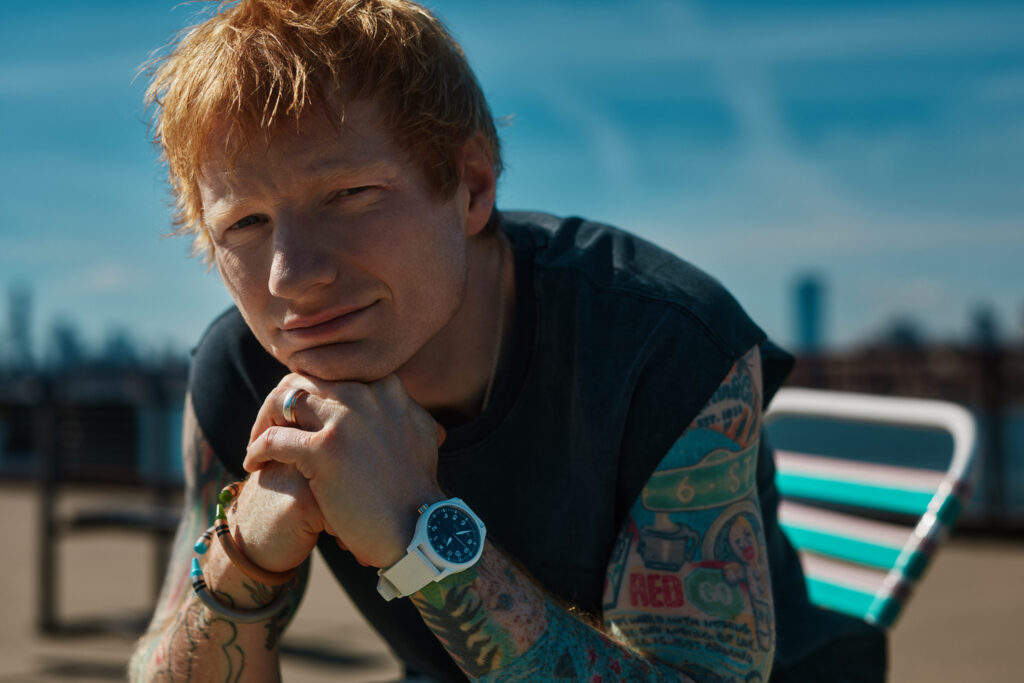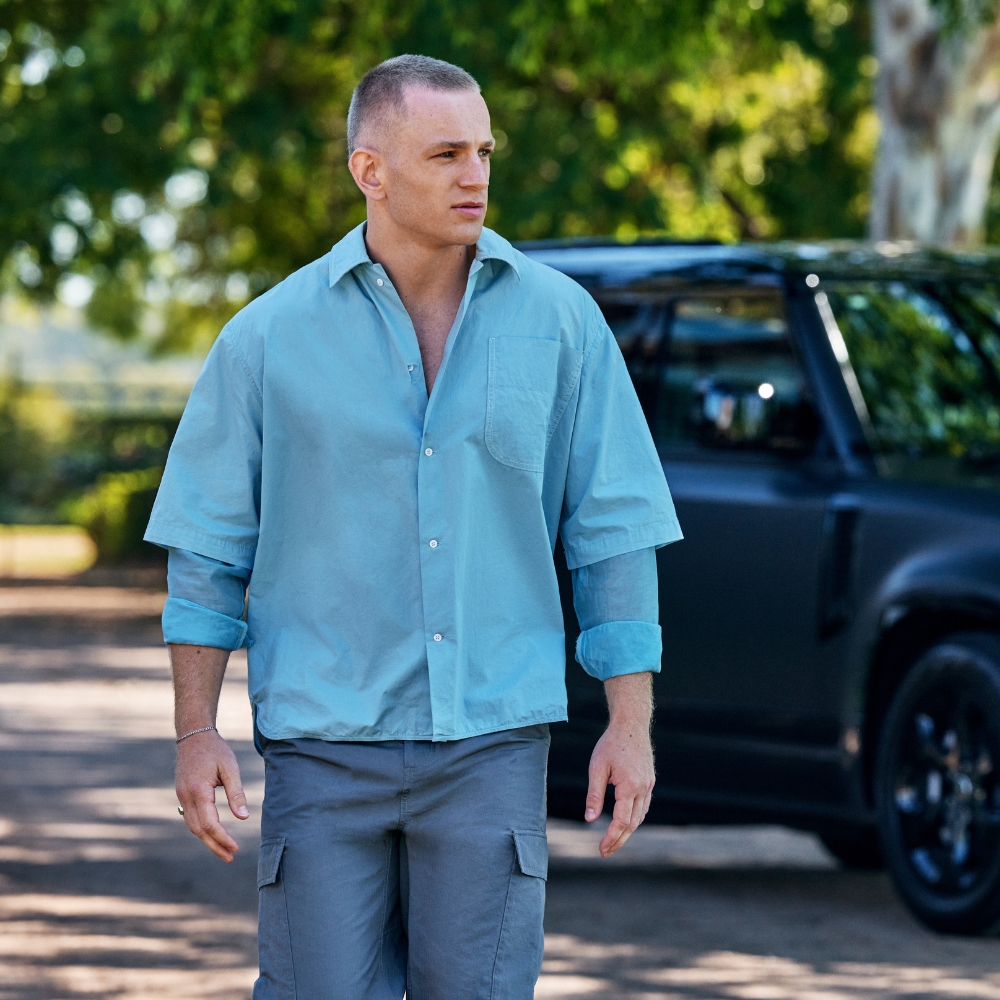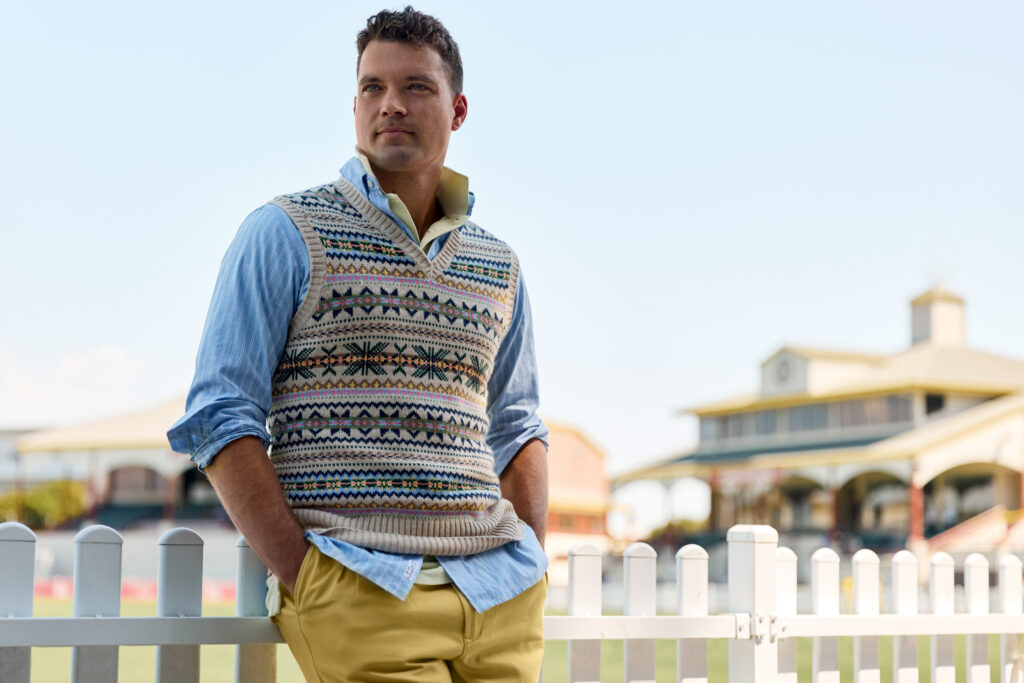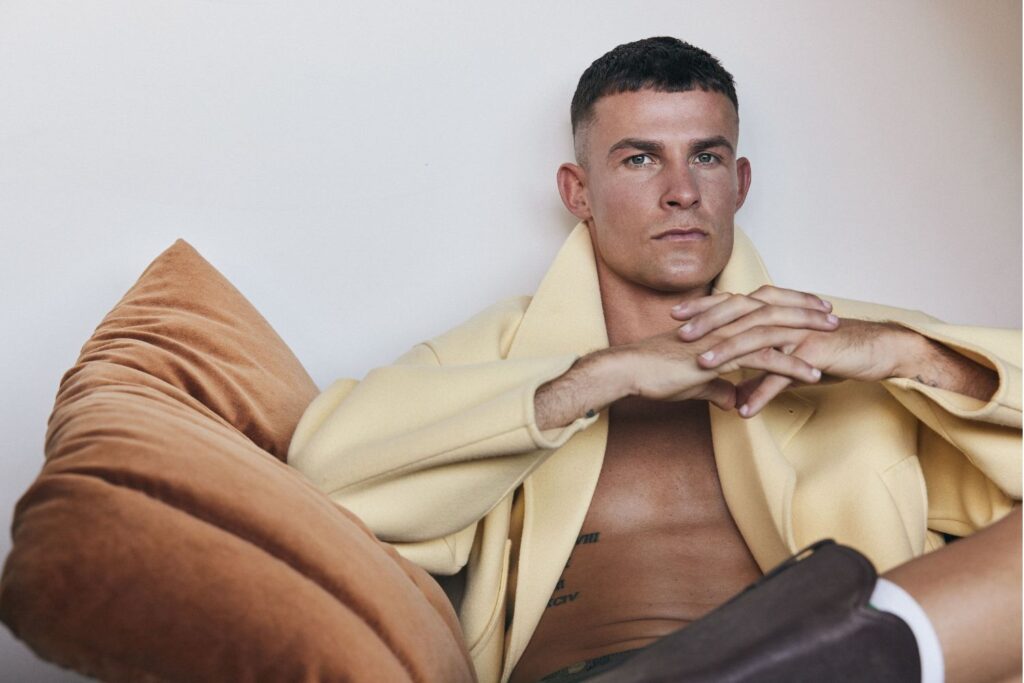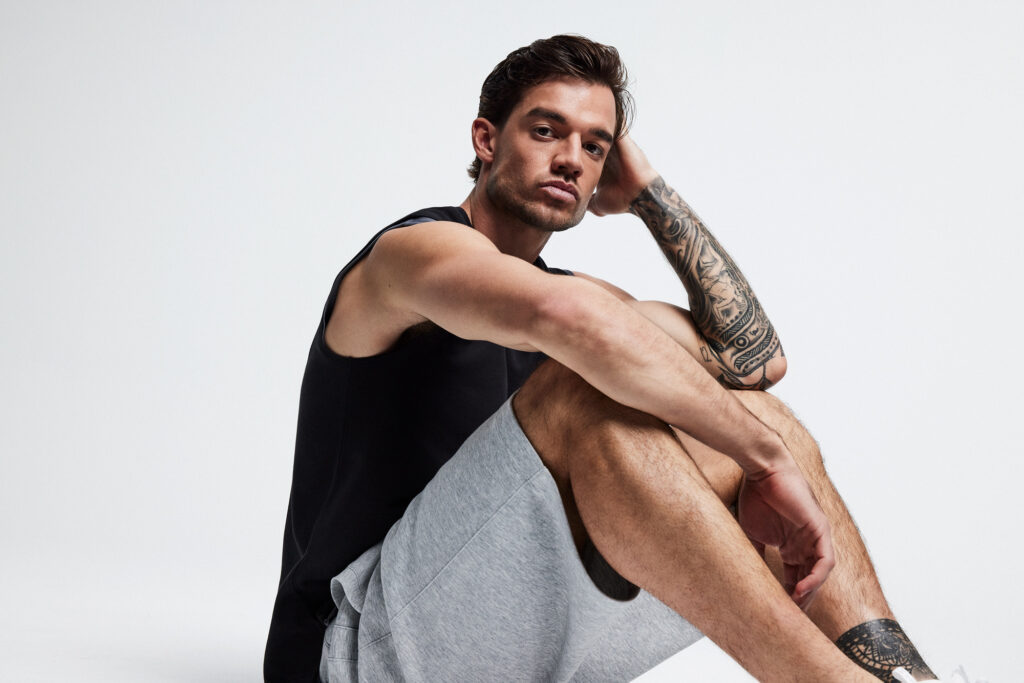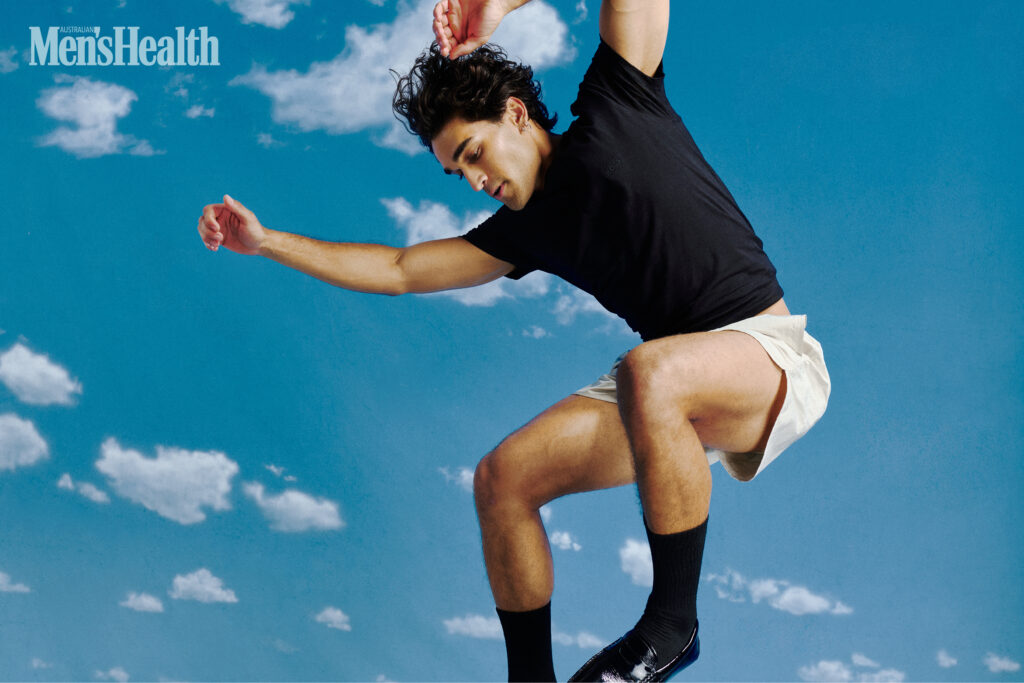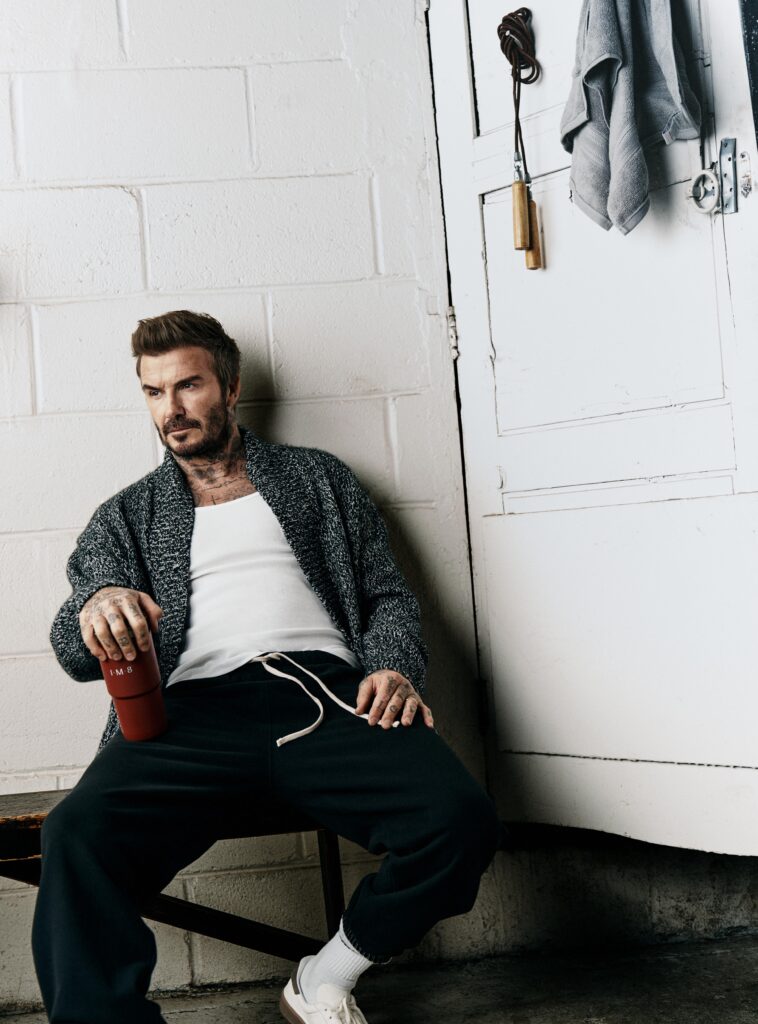KHANH ONG IS THE type of person that lights up a room when he walks in. He’s bright, earnest and unflinchingly honest. When I meet him, he’s posted up in his modern Melbourne apartment, surrounded by contemporary décor and what I assume, given his love of cooking, to be an arrangement of bottles of seasonings, marinades and sauces. “That’s actually alcohol,” Ong quickly corrects, with a chuckle, after I compliment him on the layout. “I’m an entertainer. I like to feed people. When I have people over, I like to make them drinks. So I like to have those bottles nearby.”
Ong’s honesty extends to a refreshingly authentic assessment of his health habits. “I’m a potato usually, maybe a sweet potato, but a potato,” he says, after I ask about his relationship with fitness to this point. “Fitness was never something I spent too much time worrying about growing up, and I just didn’t care about it.”
Ong never envisioned himself on the cover of Men’s Health. Not as a “gay, Asian refugee” who never took his fitness seriously until a few short years ago. “There are a lot of minorities in that sentence that separate me from what the typical cover guy looks like,” he says. But it wasn’t just Ong’s background that made him think a shirtless cover shoot was unlikely. His preconceived notions on what he, and society at large, consider to be the archetypal Men’s Health cover also held him back.
For much of his life, Ong equated strength with hulking monsters boasting comically large muscles, the type who might play a villain’s lead henchman in an action movie. This wasn’t a physique he thought was attainable. “I always thought that being strong meant having these big bulging muscles,” he admits. But over the years, his views have shifted. “I don’t think the emphasis is on being the biggest person in the room anymore. It’s not about how much you can bench or pure size, it’s about living a balanced life. I feel good, I sleep well, I function well in my everyday life, so in my mind I am strong.”
Don’t assume that Ong’s holistic approach to fitness means he doesn’t have a rig befitting the cover of Men’s Health. Ong is modest by nature, so he won’t brag about the current state of his physique, but behind his unassuming demeanour are muscles that writhe like a nest of pythons when he shifts in his chair, protruding and recoiling in all the right places from underneath his starched white shirt.
So, what changed? How did a potato, albeit a sweet one, become a muscled, lean carrot stick? “My life completely changed after MasterChef,” Ong says. “I was a DJ for nine years before that and I was really, really unhealthy. I was drinking a lot, I was partying a lot and I was DJing anywhere from three to six nights a week. I felt really empty and lost.”
His time on MasterChef opened Ong up to a new world of opportunities, providing him with the necessary tools to pursue a career in cooking and the means to reconsider his approach to nutrition and health. That led Ong to commit to a consistent fitness routine for the first time in his life.
“Khanh and I started training back in May of last year,” Matt Boland, Ong’s trainer and the founder of Thrive Coaching, tells me a few minutes before I meet Ong. “He just reached out on Instagram and said he was looking for a trainer. He wanted to add a little more size but stay lean, without getting too bulky, and one of his most important criteria was that he wanted to keep a small waist.”
Ong’s hectic work schedule, which often requires him to be away from home for extended periods, meant that he had to work out a hybrid arrangement where Boland would coach him in person and over Zoom when he was out of town. This might seem like a precarious system, one that would be easy to step back from when the going gets tough, but Ong isn’t the type of person to give up easily.
“Since we’ve been training for the cover, there’s only been a handful of weeks at most that he’s been in Melbourne for the full week,” Boland says. “He’s always in and out travelling, which was one of our biggest hurdles, but to his credit, he wouldn’t miss a session unless he was literally on a plane. We’d train over Zoom or he’d use my app. He’d do whatever he needs to do to get it done.”
In addition to three to five strength and conditioning sessions with Boland every week, Ong layered his schedule with regular stints at STRONG Pilates, visiting one of the brand’s 82 studios across 11 countries when he was travelling. STRONG isn’t your typical Pilates class. “The big difference that really makes us stand out is the combination of cardio, strength training and conditioning with Pilates,” says STRONG’s co-founder Michael Ramsey. “Our programming enables you to do a lot of the stuff you’ll do at a gym, like progressive overload, so you’re building muscle and working your anaerobic energy system.”
While Pilates has traditionally been more popular amongst women, the surge in interest in studios like STRONG from an increasingly male demographic reflects a broader shift in the relationships men have with fitness. Society’s priorities are changing when it comes to how we stay in shape, and as Ong says, it’s not all about stacking on as much size as possible anymore. A triple-digit bench press PR may be impressive, but could a buffed-up gym bro keep up with Ong during a STRONG Pilates session?
Over the course of the past year, Ong has sculpted a vision of strength in his own image, packing on muscle while staying lean and maintaining that slim waist. It’s what we like to call a transformation here at Men’s Health, but in Ong’s case, his metamorphosis isn’t just personal, it’s a sign that society at large is redefining what it means to be strong.
To forge a path rather than follow one takes courage. In fitness culture, where nauseating levels of machismo and frequently toxic discourse offer a glimpse into the uglier side of humanity, breaking away from the pack to present a new version of strength and masculinity is an act of bravery. Here, in his own words, Ong takes us through his journey.
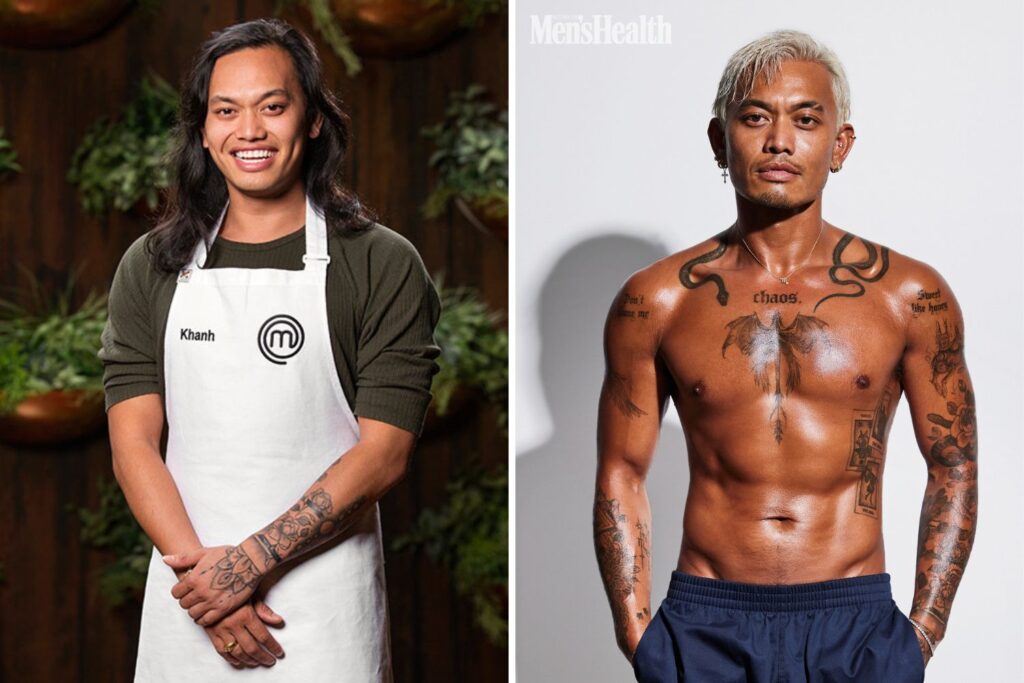
“I WAS TWO when I came to Australia, but I was born in an Indonesian refugee camp after my mum and dad left Vietnam. We came from absolutely nothing, and the language barrier made it difficult once we were in Australia as well. It was a new country for us that doesn’t speak Vietnamese.
My dad worked as a butcher and my mum worked as a seamstress. I think the only reason my dad became a butcher was that we had family friends that had a butcher shop. After a few years he decided that he would launch his own, so my parents put all of their savings into that and spent most of their time working there.
Around that time, I would come home after school and mum would come home at like 5pm or so and start cooking dinner. I would just sit on the bench helping her by rolling things or whatever jobs that I can do to help. I think that’s where my love of cooking comes from.
When you grow up, there are happy moments that imprint on you. For me that was those times, helping my mum cook dinner. If you have something like that, that you can turn into a career, you have to go towards it. For me, cooking reminds me of a time where everything was easy, everything was great, everything was happy. That time in the kitchen was the only time that my whole family spent together because my parents were so busy working.”
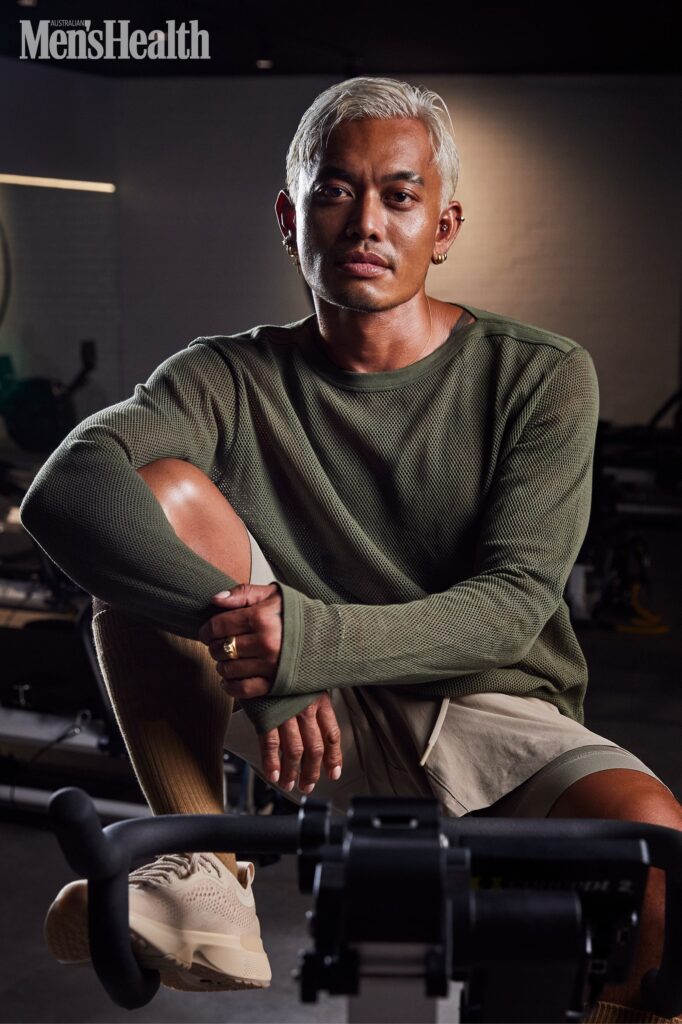
“WHEN YOU’RE GROWING UP and you’re a little bit different, you try so hard to hide all of those differences. You try to make it so that you’re the same as everyone else, and it’s not until you get older and you feel more comfortable in your skin that you begin to embrace those differences. I feel like that’s where I currently am, embracing my differences.
When I was younger, I tried so hard to just not be loud, not be in the way, not draw attention to myself, and it wasn’t until my late teens that I realised that being quiet is boring, it’s not who I am. For my whole life I’ve always said, ‘Yeah, school has been amazing’, but I feel like I might’ve tricked myself into thinking that. Now as I get older, I go ‘Wait a minute, there were parts of school that weren’t amazing’. Maybe I’ve blocked those parts out.
I realised pretty early on that I was gay, but growing up gay wasn’t that bad. I came out to people at my school before I came out to my mum. And once I came out, the initial teasing stopped. I guess they were like ‘What can we say? He’s actually gay, but he’s owning it, so where do we go from here?’
I think the reason I came out to my friends before my parents was the cultural pressures. In the early 2000s, being gay in the Asian migrant community wasn’t really a thing. You pair that with not wanting to disappoint your parents and you have the reason for why it took me so long to come out. I felt as though being different and being gay was a disappointment to them. I felt really ashamed by it for a long time.”
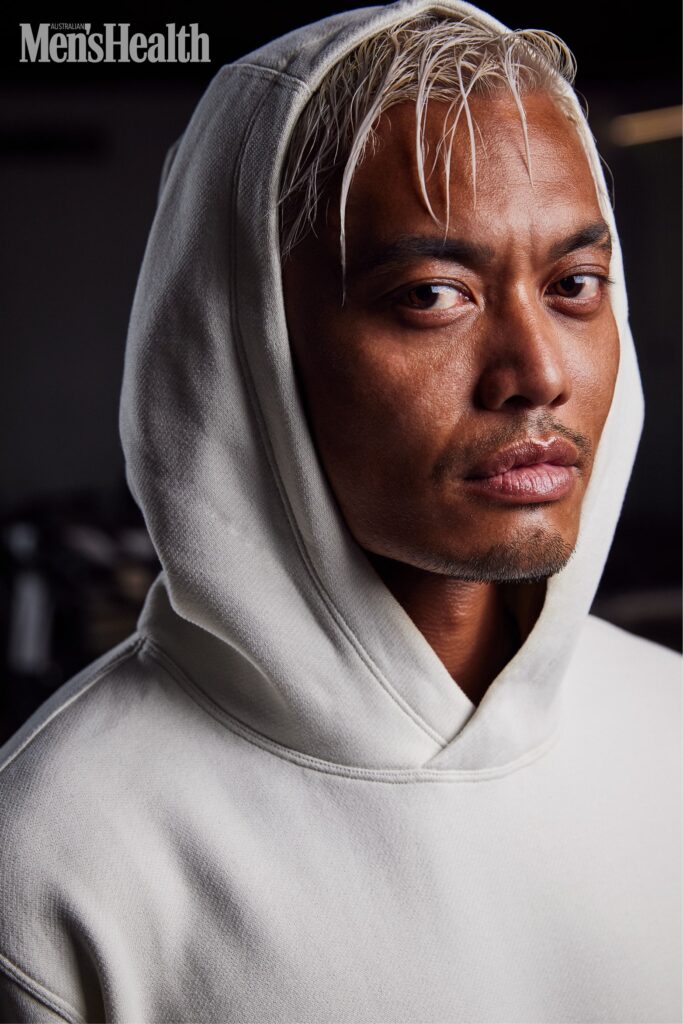
“MY DAD PASSED AWAY when I was 15. That was a really difficult time for me because I didn’t have any other male role models in my life. I really hid away and went into my shell. I didn’t deal with my dad’s passing for a long time. I just hid my feelings, which I think comes with my Vietnamese heritage and my upbringing. We aren’t taught to talk about our feelings, we aren’t taught to be open and express ourselves.
I didn’t deal with it until I was 18. I was having a random conversation with my mum and it just hit me that dad had really passed. I just cracked it and I cried and cried and cried. It wasn’t until that point that I really dealt with the loss.
I was a massive ratbag when I was a teenager, so my mum and I had a really weird, rocky relationship from when I was around 15 until I was 18. When I came out to my mum, I was really annoyed and nothing could make me happy. I think I wasn’t dealing with my father’s death very well, so instead I just took it out on my mother.
I thought that coming out was going to be this big moment where I would actually have something real to be mad about if she reacted badly. I weaponised it a bit. But the reaction that I got was the opposite of what I was expecting. She was the most supportive person ever.
When I told her that I was gay, she was like ‘Ok, we’re going to send you to Vietnam’. So I thought, Here we go, we’re gonna fight, she’s gonna try to send me to some kind of camp in Vietnam that would rehabilitate me or whatever. But really, it was because she thought that because there aren’t many gay people in Vietnam that it would make me really famous. I just thought, What the fuck is going on?”

“I AM, 100 per cent, in the best shape I’ve ever been in. It was only in the last six years that I started exercising consistently, but I was still only working out twice a week and doing a lot of yoga. In the last six months, the gear shifted. A lot.
I started seeing [my trainer] Matt Boland three times a week and then it slowly crept up until I was seeing him five days a week. When I’m away, I train with him via Zoom. I’ll wear headphones and have him on the phone when I’m in the gym. He watches my form, he makes sure that I’m not taking a five-minute break.
Six months ago I realised how important health is to me as I’m getting older. I was always under the impression that I hated cardio, and that my body just wasn’t built for that kind of exercise. I think the issue was that I never found a source of cardio that worked for me. That’s where STRONG Pilates really helped me because it’s a mixture of cardio and strength training. It’s high intensity, but low impact.
I think ten years ago everyone thought that Pilates was for women, but that’s crazy because it can be so beneficial for everyone. Everyone can use a strong core and better mobility and it trains stuff that you otherwise wouldn’t. With conventional Pilates, your weights don’t get that heavy. You maybe do like six, seven or eight kilos tops. STRONG goes up to 30 kilos. So it’s Pilates and strength training and a full-body workout. It burns more calories than conventional Pilates does, and it’s challenging, but in each exercise you can choose how much you want to be challenged because it’s all adjustable.
Because STRONG is all low impact stuff, I can do it five times a week and not feel too heavy on my joints. And because every single day is different I don’t get bored from repetition. There are days where there’s no cardio, there are days where it’s loaded on lower body only or there are days when you’re heavy lifting up top. Then I tell Matty what I’ve been doing at STRONG and he can complement it really easily. I think that the combination of doing Pilates and regular strength training was very beneficial for me. STRONG really built up my core, which helped me lift heavier.
I get bored quite easily and so putting me in a class where I just run for 45 minutes or just run laps, it’s not going to work. What STRONG gives me is the ability to get on a Rowformer or a Bikeformer, do five minutes of high intensity work, go hard, and then have a break, but still an active break. It helps me keep my mind active.
Working out in a group setting also helps because it can get very competitive. I have this one nemesis who I always want to go a little bit faster than, or lift a little heavier or be a little stronger. That keeps me motivated.
What I usually do is go to STRONG first thing in the morning and then head over to Matt’s gym, lift really heavy and be done by 9:30 in the morning. I feel great about myself because I’ve done two workouts and I can go on with my day. I don’t feel too tired though. If I were to go for a run, I’d feel so knackered that I couldn’t do anything else. I don’t feel like that with my routine.”

“MY TRAVEL SCHEDULE has been the hardest part of my training. There are months where I’m barely at home and entire weeks where I’m away. With Matt, it’s great because we can Zoom and he can still guide me. With STRONG, it also makes it easier because they have studios everywhere.
My other big challenge is actually food. I have to eat for work, and what I have to eat isn’t always healthy. After this interview, I’m going on a five-day food shoot in Thailand, where I’ll be eating street food. I can’t control those macros.
Because it can be hard to control my diet at times, I try to eat really clean when I come home. About four or five months ago, I went to a health retreat and it made me look at food really differently. I always looked at food as full of flavour, delicious, indulgent, and I thought that health foods were bland and boring. I realised that a lot of people who make healthy food recipes don’t actually love food like I do, they only see it in terms of nutrition.
I’ve started making recipes that are actually delicious and allow me to hit my macros. Matty doesn’t give me meal plans anymore, he just tells me my macros and then I’ll form my recipes around them.”
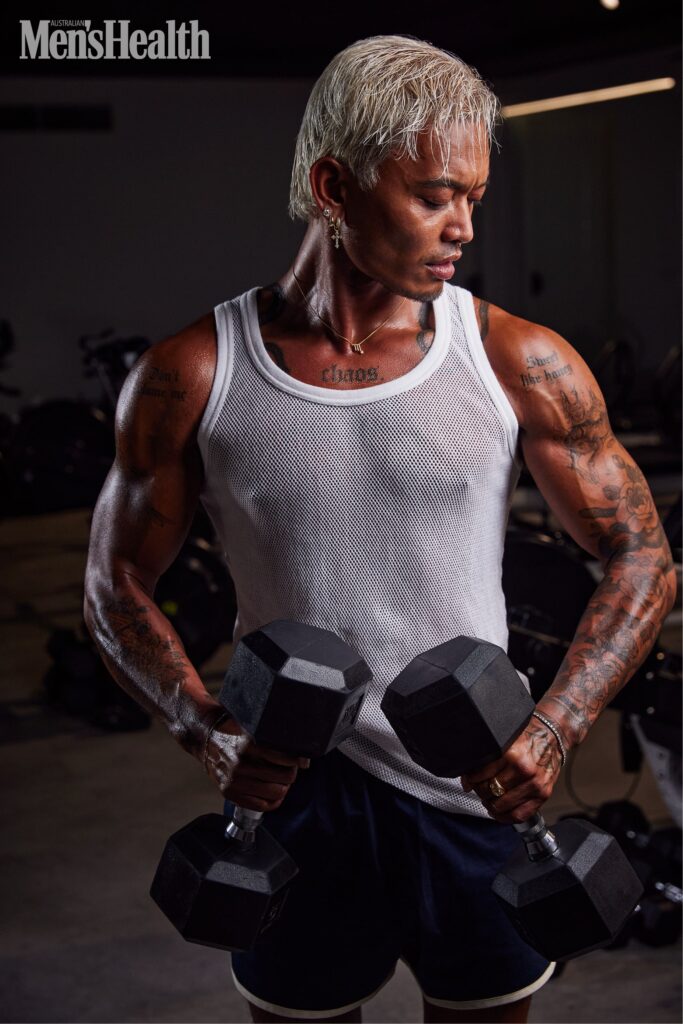
“EIGHTEEN-YEAR-OLD ME would have never thought he’d be on the cover of Men’s Health. The bodies of the guys that were usually on the cover just didn’t seem attainable to me, not just because they were so huge, but because they just didn’t look like me. I always saw guys with bodies I couldn’t believe, the kind I thought I could never achieve. Now I know that strength isn’t just about how you physically look, it’s about how you feel.
These days, being strong looks different; being healthy looks different. It used to be really, really fashionable for women to be super skinny and for guys to be giant. That has changed. As I’ve gotten older, I’ve come to realise the importance of changing perceptions, because I want people like myself to understand that fitness comes in all different shapes and sizes. It can look different for everyone, and being fit doesn’t have to fit a particular mould.
I’m trying my best to change the way people think about health and fitness. A lot of the time when I talk about food, I try not to talk about it in calories. I talk about macros instead. One thing that I’m trying to do is make healthy recipes that aren’t restrictive in regard to calories. It’s more about fuelling yourself with good food. My approach to workouts is different too because, yes, I go to the gym, but I also do STRONG and I’m open to trying all kinds of things. It’s about finding what works for you.
In the future I really want to explore the fitness side of food. I want to see how we can make healthy foods without losing flavour, without losing the traditional stuff. I want to show people that eating healthy doesn’t need to be boring, that being fit doesn’t mean going to the gym seven days a week.
As for my goals, I don’t think I’m ever gonna be satisfied. I’m not the kind of person who can just be content. I always want a little more, I want go a little further, I want to push harder. So I’m going to keep on pushing.”
Khanh Ong’s day on a plate
“When I wake I usually start with a double shot espresso, then I head to STRONG Pilates and when the session is complete, I usually have about 50 minutes for a quick refuel.
This is usually one of my chia protein puddings that I make in bulk or my overnight protein oats. I decide on my ‘grab and go’ breakfast depending on how many carbs I need between STRONG and seeing Matty Boland my PT. So it’s reliant on the workouts but they are packed full of fibre. I also usually have a sugar free Kirk’s or Coke Zero at this point.
Post workout I’ll have a protein shake – Optimum Nutrition is currently my fave. I’ll also have a half serve of leftovers that I would have made for content. The last three months my content has been very strict so everything I made had macros worked out. This ranged from my better stroganoff, Tex-Mex beef bowls or honey soy chicken noodles.
Usually at this point I’ll begin my day making content, recipe writing or attending meetings. At around 1pm I’ll get hungry again and have a lighter meal, which is high in protein i.e. my poached chicken and cabbage salad, or my grilled chicken and rocket salad or my prawn and lentil salad. (I usually film myself making a salad if the day allows or I would have pre-made this).
Next snack of the day would be cruskits or vita wheats with poached chicken or tuna. This is really simple with some avocado, tomatoes or if I’m feeling fancy, I’ll top them with cottage cheese, cucumber and chilli crunch oil. This comes with another Coke Zero.
Dinner consists of another one of my recipes but usually something heavier as I always have friends over. So my “eff off and leave me alone” chicken, beef and broccoli rice bowls or steak and salad.
Post dinner dessert is usually fruit. I like tart fruits so green apples, green mango or even some berries. This I’m embarrassed by but I also usually have a Musashi protein bar before bed. I’m kinda addicted to the one with 43g of protein. It’s got this chew and is really moreish, which does make me feel like I’m eating a caramel chocolate bar. I aim to get in 3 litres of water throughout the day but I do have an addiction to Coke Zero and sugar free drinks.
The best thing about the last three months aside from training is that I’ve had to make recipes that fit into my macros, which has also changed the content that I make. So my Instagram is full of very health conscious recipes. Protein packed recipes or salad/macros bowls.”

Khanh Ong’s training split
Two to four times per week: STRONG Pilates workout
STRONG Pilates workouts are an integral part of Ong’s routine. He’ll take part in cardio infused Pilates workouts for a full-body burn with low impact movements and high intensity cardio bursts, with the goal of building strength and mobility with a huge calorie burn.
A typical STRONG class moves through Pilates flows focusing on strength and stability, split into upper body, lower body and core. Each block is followed by a 3-5 minute conditioning segment on either the row or bike side of STRONG’s Rowformer machine.
When he travelled, Ong’s routine stayed consistent. He’d visit a STRONG location near wherever he was visiting and keep to the below training split designed by his trainer, Matt Boland, founder of Thrive Coaching.
Day 1: Push (chest, shoulders, triceps, core)
- Flat dumbbell bench press – 4×6-8
- Dumbbell shoulder press – 4×6-8
- Incline dumbbell press – 3×8-10
- Lateral raises – 3×12-15
- Dips – 3×8-12
- Cable rope triceps pushdown – 3×12-15
- Hanging leg raises – 3×12-15
Day 2: Pull (back, biceps, rear delts, core)
- Chest-supported machine rows – 4×8-10
- Pull-ups – 4×6-8
- Bent-over barbell rows – 3×8-10
- Seated cable rows – 3×10-12
- Face pulls – 3×12-15
- Dumbbell hammer curls – 3×10-12
- Ab wheel rollouts – 3×10-12
Day 3: Legs (quads, hamstrings, glutes, calves, core)
- Back squats – 4×6-8
- Romanian deadlifts – 3×8-10
- Bulgarian split squats – 3×10-12 (each leg)
- Seated leg curls – 3×12-15
- Standing calf raises – 3×12-15
- Cable woodchop – 3×12-15 (each side)
Day 4: rest or active recovery (optional: mobility, cardio, light core work)
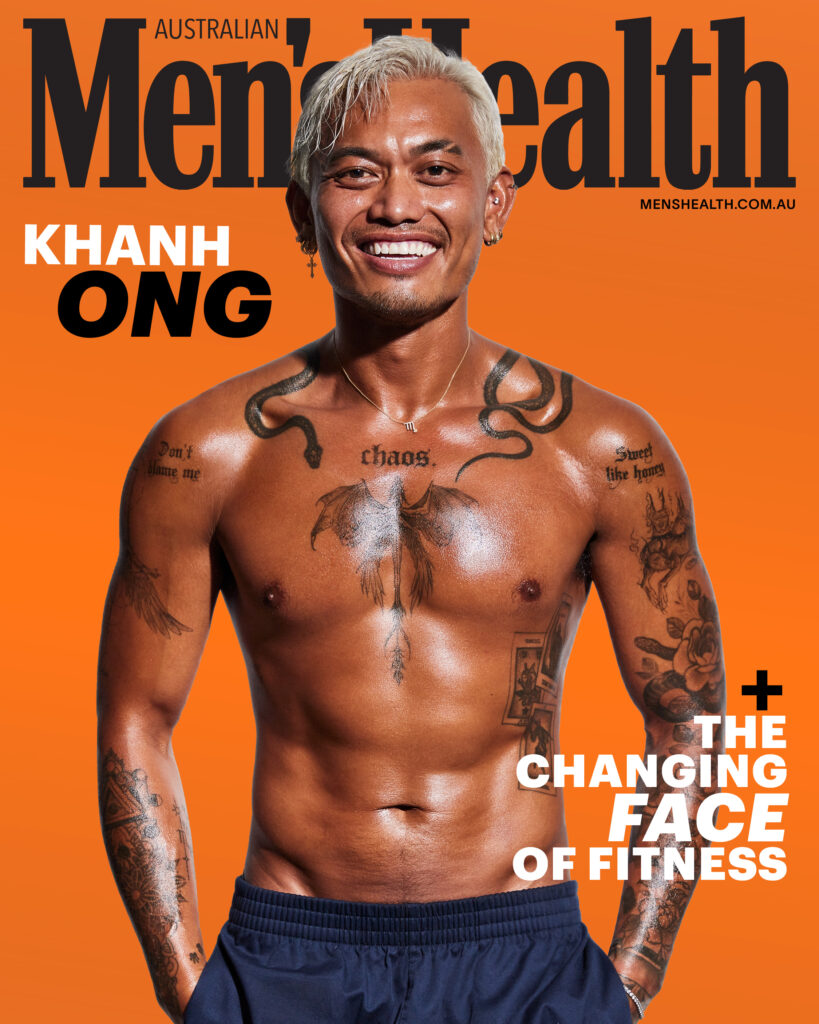
Words: Cayle Reid
Photography: Sam Bisso
Creative Director: Grant Pearce
Head of Content: Ben Jhoty
Digital Director: Arielle Katos
Producer: Sofia Sallons
Art Direction: Evan Lawrence
Grooming: Ashleigh Carpenter
Videographer: Jordan Coles




